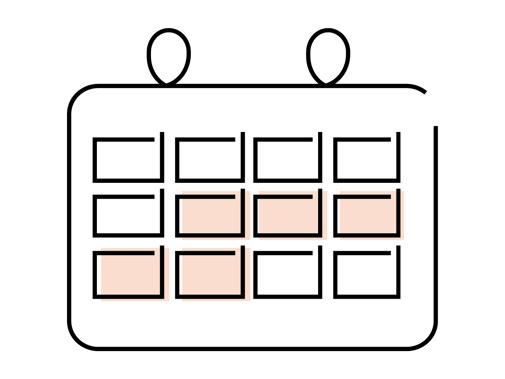Time out of training (TOOT) is time when a doctor is not in work, due to illness, compassionate leave or industrial action.
Every doctor in training has an annual allowance of ‘time out of training’. This is 20 days per year in the Foundation Programme, and 14 days per year in speciality and General Practice training programmes.
If a doctor in training exceeds their TOOT allowance, the below considerations apply. The following information is in keeping with guidance from the General Medical Council (GMC) and Health Education England (HEE).
Exceeding TOOT allowances
If a doctor exceeds their TOOT allowance, then this may lead to a review of overall performance and achievement of curricular outcomes but does not mean an automatic extension to training. This review does not require an Annual Review of Competency Progression (ARCP). Provided that outcomes are being met, there would be no justification to extend training as a result of taking industrial action.
Any potential extension to training should be discussed with the Foundation School Director/Postgraduate Dean.
Foundation year 1 (FY1)
FY1 has a time-based component to it; this is due to an EU directive which states basic medical training should comprise at least 5,500 hours, and should include one full year of medical practice prior to full registration. FY1 is considered the year of medical practice, and is one of the purposes of provisional GMC registration.
FY1s do need to complete this time element, but in practice if they exceed their 20-day TOOT allowance, the GMC supports foundation school directors applying flexibility to reflect the nature and history of absence, the timing and the effect of the absence on achieving the necessary outcomes. Following review, if required, FY1 can be completed in the first days of the second year of practice, ‘borrowing’ the time from FY2. The doctor would then gain full registration once the time element of FY1 had been completed, and would subsequently progress normally throughout the remainder of their Foundation Programme.
If an FY1 doctor is approaching their 20-day TOOT allowance, they should raise this with their local Foundation School Director early, so individual arrangements can be put in place.
Doctors in training, other than FY1 doctors (including FY2s and GP registrar)
All postgraduate medical training, other than FY1, is outcome-based alone with no strict time component. Within each 12-month period, where a registrar has accumulated 14 days’ TOOT (20 days in FY2), a review may be triggered regarding whether the registrar needs to have their foundation or core training programme end date, or their CCT date, extended. However, provided that a registrar is meeting their competencies, there would be no justification to do this and there would be no extension to their training as a result of taking industrial action.
GP registrars may have contractual commitments to spend a defined amount of time working out-of-hours shifts, but these contractual requirements should not be conflated with educational requirements ,which are not time-based. You can read more about this on the RCGP website.
Case studies
Case study 1 – Foundation year 1 doctor
An FY1 has been too unwell to attend work for 10 days of their training year. They have also had 5 days of compassionate leave, and have taken 3 days of industrial action, totalling 18 days during their FY1 year. They have otherwise met all competencies, and have received (or are expected to receive) an Annual Review of Competency Progression (ARCP) Outcome 1, meaning they are expected to progress normally to their next placement, and gain full GMC registration at the expected time.
They are unwell again and have a further absence of 3 days, taking their TOOT to 21 days.
As they have exceeded 20 days TOOT, a review may be needed, but there is no automatic extension of training or need for a new ARCP. As they have met the required outcomes and competencies for their FY1 training year, as evidenced by their ARCP Outcome 1, there would be no justification to extend their training.
In order to gain full GMC registration, following review the doctor may need to complete an additional day of provisional registration, as they were one day over their TOOT allowance. This allows them to satisfy the time component of FY1. In practice, this means that they can rotate normally to their first FY2 post, and gain full registration one day later. Once fully registered there is no longer a time-based component to their training, and further progression is assessed based on outcomes.
As long as they doctor meets the outcomes and competencies of their FY2 year, they would receive an Outcome 6 at their next ARCP (recommendation for completion of training - gained all required competences), completing the Foundation Programme on the same day as they would have done had they had not exceeded their FY1 TOOT allowance.
Case study 2 – Any other (i.e. non-FY1) doctor in training
A doctor in training has been too unwell to attend work for 12 days in a training year. They take industrial action for 3 days, taking them over their TOOT allowance of 14 days (FY2 is the exception, with an allowance of 20 days).
A review may be needed as they have exceeded their TOOT allowance. If they have met the required outcomes and competencies for the training year, as evidenced by their Annual Review of Competency Progression (ARCP) outcome, there would be no justification for their FY2 end date, core training programme end date, or their CCT date to be extended.
The doctor has full GMC registration so there are no considerations for the GMC in their case.
Case study 3 – Any doctor who does not meet their required outcomes and competencies
Any doctor in training who does not meet their required outcomes and competencies, as evidenced by their Annual Review of Competency Progression (ARCP) outcome, may have their training extended via the usual ARCP process. This is independent of the amount of time out of training (TOOT) the doctor has had.

